With each passing year Vertigo becomes more profound, insightful, intricate and beautiful (hopefully I am not the only one to see and appreciate the graceful aging of this masterwork); all of these facets culminate to cause an obsession for this colorful Film-Noir, providing the viewer another step up their own personal dizziness-inducing, mind-bending “Mission San Juan Bautista” staircasepiece, marching ever upward toward that inevitable OCD-landing, simply know as, “As Anything Hitchcockian Syndrome”, which is a branch of the more commonly know and widely understood malady: “Director Envy”. Both resemble modern descriptions of older problems (which we are now savvy enough to dub as a “disease ”) which many have had to go it alone, facing the debilitating symptoms, but wrote it off to that yearly celebration called birthday; henceforth this ailment will be referred to (at least for the purposes of this article) AAHS. If the disorder exists I have an incurable case of it, and truth be told, am very glad to have contracted it.
Vertigo stars James Stewart (once again {Rear Window, 1954} portraying a injured man, both physically and mentally), Kim Novak and Barbara Bel Geddes, with Tom Helmore, Henry Jones, Ellen Corby and Raymond Bailey; a wonderful supporting company many of whom went uncredited who in turn are a credit to casting director Bert McKay. From the opening sequence and Scottie’s dizziness to the final heart-throbbing-heartbreaking, eye-opening, mise en scène, Vertigo by Alfred Hitchcock is a perfect film; not only as a thriller (which it is) but wrapped up in this attractive suspense story, is this deep, dark, psycho-sexual (pardon my reference to Psycho) obsession tale of that which Scottie (we) cannot have, yet, he (we) cannot live without.
Every aspect of Vertigo is so well polished and cut, that each department-talent is easily and clearly seen, but, all functioning together to form a cohesive work, and can be viewed, as one looks at a rare diamond; appreciating all that goes into making a one of a kind masterpiece, this jewel nearly stands alone since debuting from the world-wide-movie-mine in San Francisco, on May 9th, 1958. The various layers of this story by screenwriters Alec Coppel, Samuel A. Taylor and Maxwell Anderson are communicated in what at first appear as everyday conversations, few words are needed to explain Scottie’s issues and I believe that Hitchcock (primarily a visual director) could have shot Vertigo with no dialog. Adding notes of complexity by what is clearly one of the best uses of a city in any film, San Francisco becomes another character in Hitchcock’s demented vision, by the delicate hand of director of photography Robert Burks, who literally brings to life the heart of San Francisco, therefore it is another obsession loaded onto the proverbial shoulders of us the movie-goers. Bernard Herrmann was enlisted and given the task to bring Vertigo to life musically and rendered to Hitchcock a magnificently produced score, adding texture, emotion and tenseness which were for Herrmann common enough descriptions. The costumes adjoin to our already fixation perspective, this accomplished by oft Oscar nominated (35 films) and Oscar winner (7) Edith Head, affording more depth to film and characters, the clothes becoming (as the city of San Francisco does) additional personalities in Hitchcock’s little play about human desire; the art and set decoration are triumphs, no less than the script, cinematography, music and costume design, here the works of Henry Bumstead, Hal Pereira, Sam Comer and Frank R. McKelvy teach the importance of these supporting art-forms of the moving-picture; I can think of no better way to demonstrate and reveal the obsessive desires in all of our minds, than through the mediums of clothing, architecture, music, fine-art, furniture and bric-a-brac, each of these artistic elements successfully populate Vertigo.
Even shapes, contours, lines and configurations (as they would be important in North by Northwest, 1959) are significant and vital parts of the economy of Vertigo. Also, colors are brought to the film-making-palette as a means to convey the varying emotions of our protagonist and those people flowing in and out of his life, these additional tools of shapes and colors not only complement but are integral to the story’s-progression. Hitchcock definitely used a large canvas to tell his narrative of Scottie Ferguson, using many and differing implements to reveal what was in his imagination and then projecting it onto the silver-screen.
So, if what you desire is a calming, relaxing, non-thought provoking movie, then it is self-evident that Vertigo is not the film for you. On the other hand if what you seek is the best that anyone has to offer as a director and story-teller, something that will leave your mind with more questions than answers, troublesome self-realizations and a sneaking suspicion that you are not as normal as you believed, then you must schedule a viewing (or re-viewing) of Alfred Hitchcock’s 1958 work of celluloid-art, Vertigo.
By C. S. Williams













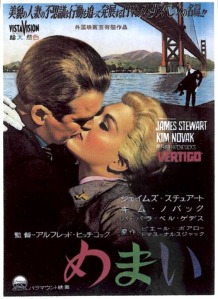

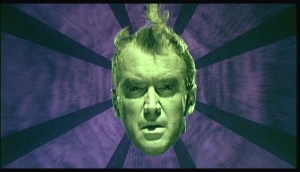



























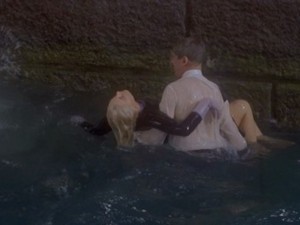

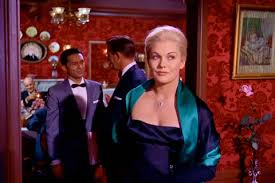


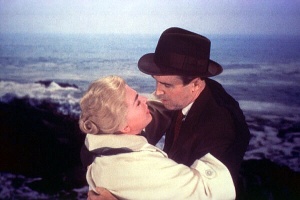
Reblogged this on Classic Film Aficionados.
Raymond Bailey later appeared in the highest rated half-hour episode in known history!